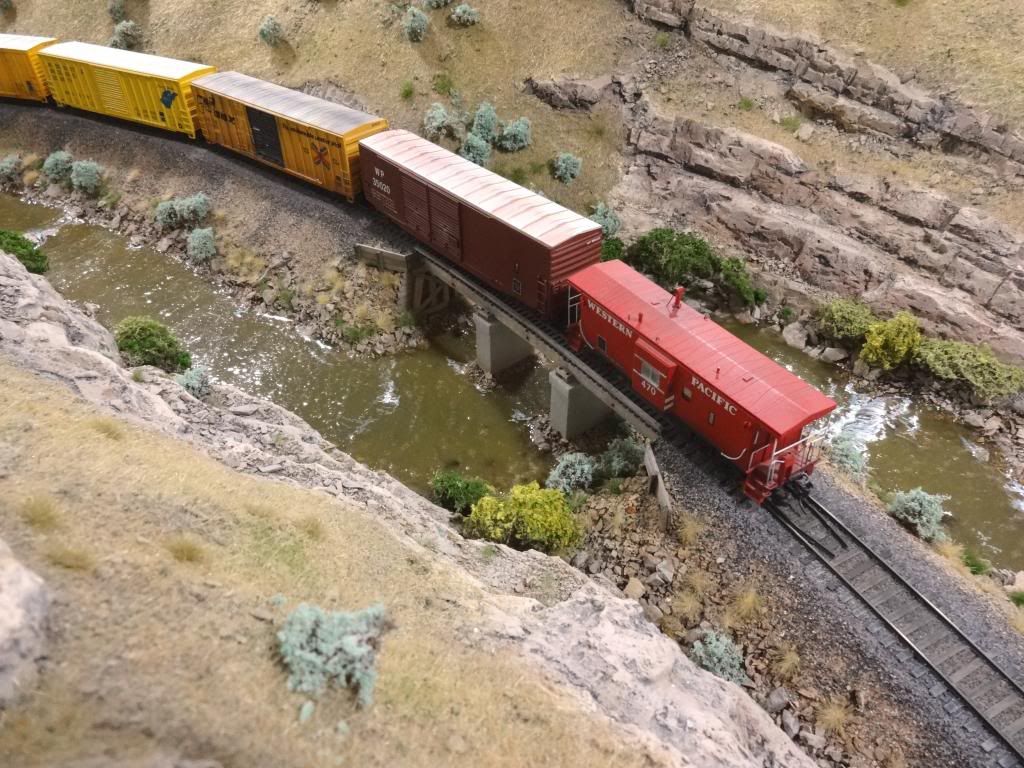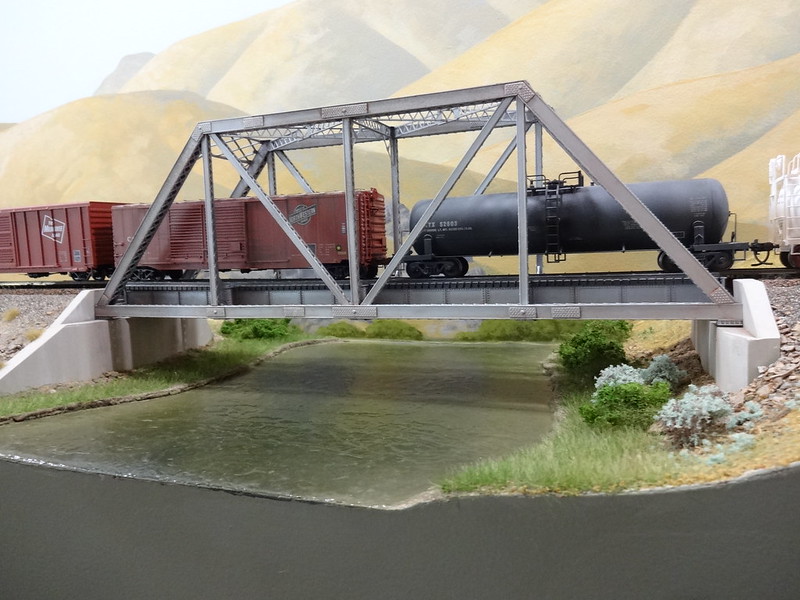While I have used clear casting resins in the past, the water features on my current layout were all done using Durabond 90 patching plaster. It sets in approximately 90 minutes (hence the “90” in the name) allowing plenty of time to work-in ripples, rapids, waves, etc. The type of such work will depend, of course, on the consistency to which you mix the product. It will, however, set in the stated time whether it’s mixed as stiff as peanut butter or as watery as a bad cream-style soup. [swg] Once fully-cured, it’s tough and permanent - mine has been subject to countless cameras placed upon its surface, with no damage to raised details or scratches or marks on the surface.
The riverbeds, in most cases, are plywood, but I’ve also poured rivers into depressions in the plaster-on-screen landforms. On plywood, the “water” is usually less than 1/8" thick, and is finished with drywall knives. On plaster terrain, the “water” can be over 1" thick and is usually poured into place. Regardless of the thickness used, it doesn’t shrink or crack.
I used flat latex house paint to colour it, applied with a 2" brush. The dirt colour used to represent muddy water is also useful, when thinned with water, as a colouring wash for my plaster-on-screen terrain, prior to adding ground cover. For the water areas, though, it’s applied full-strength. The dark grey/green, used to represent deeper water, is also used on background trees and distant hills.
To make the “water” look wet, it gets three coats of clear, water-based high gloss urethane, applied with a brush and strictly following the manufacturer’s instructions on re-coating times to avoid having to sand between coats - difficult to sand water, especially if it’s not calm and smooth. [swg]
[IMG]http://i23.photobucket.com/albums/b399/doctorwayne/some%20water%20scenes/Foe-toesf




